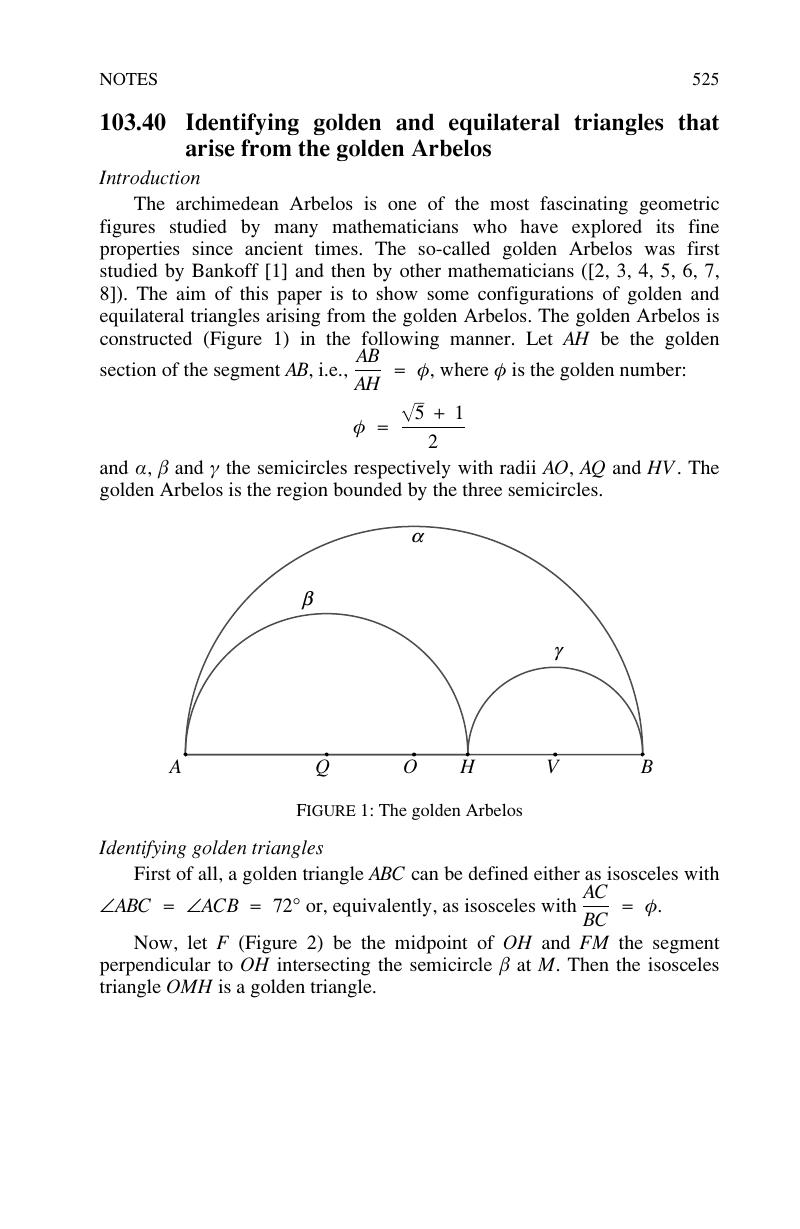No CrossRef data available.
Article contents
103.40 Identifying golden and equilateral triangles that arise from the golden Arbelos
Published online by Cambridge University Press: 21 October 2019
Abstract
An abstract is not available for this content so a preview has been provided. Please use the Get access link above for information on how to access this content.

- Type
- Notes
- Information
- Copyright
- © Mathematical Association 2019
References
Bankoff, L., The marvelous Arbelos, The lighter side of mathematics (Guy, R. K., Woodrow, R. E., eds.) The Mathematical Association of America, Washington, DC (1994) pp. 247–253.Google Scholar
Okumura, H., A note on regular pentagons arising from the golden arbelos, Glob. J. Adv. Class. Mod. Geom. 5 (2016) pp. 75–77.Google Scholar
Okumura, H., Watanabe, M., The arbelos: a cosmos made by three semicircles, Iwanami Shoten (in Japanese) (2010).Google Scholar
Gardner, M., Mathematical games: The diverse pleasures of circles that are tangent to one another, Sci. Amer. 240 (1979) pp. 18–28; reprinted in Fractal music, hypercards and more, W. H. Freeman (1992) pp. 149-166.CrossRefGoogle Scholar
Stakhov, A., Olsen, S., The mathematics of harmony: from Euclid to contemporary mathematics and computer science, World Sci. (2009).CrossRefGoogle Scholar
Dodge, C. W., Schoch, T., Woo, P. Y., Yiu, P., Those ubiquitous Archimedean circles, Math. Mag. 72 (1999) pp. 202–213.CrossRefGoogle Scholar
Scimone, A., Some nice relations between right-angled triangles and the Golden Section, Teaching Mathematics and Its Applications, (2011) pp. 85–94.Google Scholar


